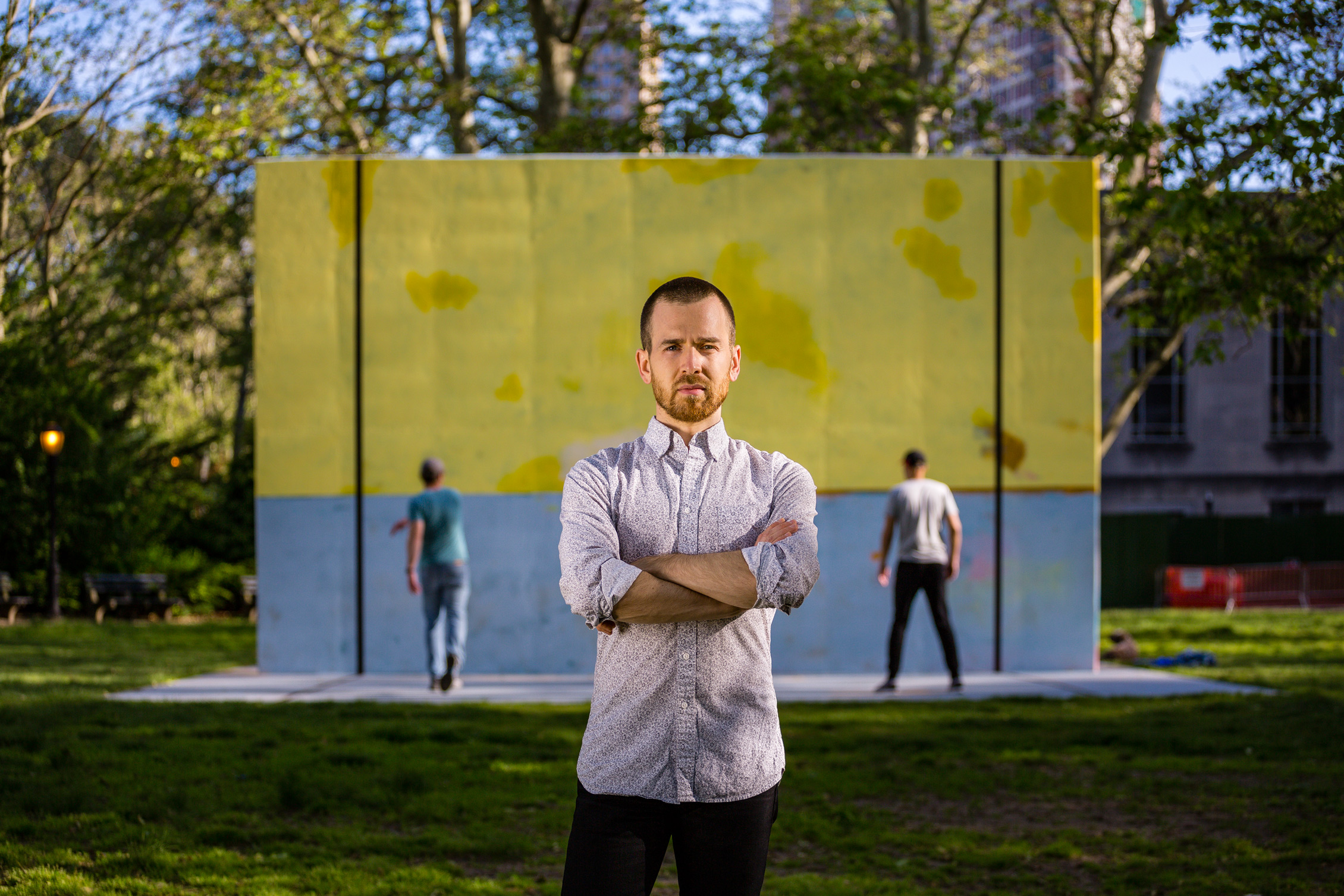
When Daniel S. Palmer was a kid, his grandmother kept a book of the collection of The Metropolitan Museum of Art on her credenza. “I would pore through it for hours,” he says, “totally mesmerized and captivated. Even though my parents were not in the art world, they understood that learning more about art could be good cultural enrichment. I found and discovered myself in art, thinking about it, talking about it.” He went on to study art history, focusing on American art made in New York during the Great Depression and following the Holocaust. “I love that many artists believed so firmly in the power of their art to create genuine social change,” he says.
Now the Curator at New York’s Public Art Fund—he joined the staff in 2016, after working as the Leon Levy Assistant Curator at the Jewish Museum—Palmer has maintained his childhood sense of excitement with every collaboration. He describes Harold Ancart’s recently opened Subliminal Standard at Cadman Plaza Park as “rewarding”; his next big project, Carmen Herrera’s Estructuras Monumentales, opens July 11 at City Hall Park and “is so special, and deeply meaningful to me.” (Herrera will be 104 at the time of the opening.) “Artists hold such an important role in society. They are our thought leaders, dreamers, critics. To have the honor of stewarding their vision and getting to share that with people is a duty I take really seriously.”
Sharing with people is what Palmer likes best about working with Public Art Fund—it’s “the inclusiveness I had been searching for,” he explains. “The best resources for me to learn from are always the people of the city—I love sitting in the sites where I’ve curated an exhibition and watching how they use the space, respond to the work. My approach has never been that of the curator who selects from art fairs and puts together an exhibition as a kind of auteur. What interests me is the artists themselves—the dialogue they’re developing, and imagining how that will connect back to audiences and society as a whole.”



